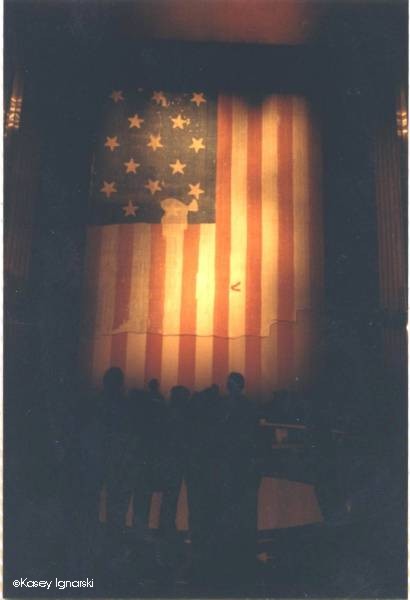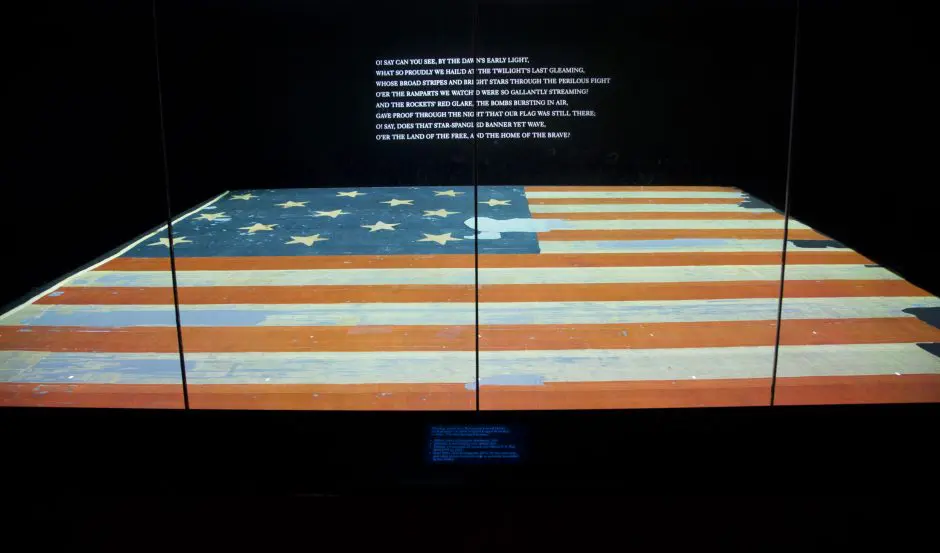Courage is in all of US, Trust God, and follow his lead!

LET FREEDOM RING, AND ANY TYRANOUS GOVERNMENT BE STOPPED IN THEIR TRACKS
LIBERTY AND JUSTICE FOR ALL WILL PREVAIL
IN THE GREAT UNITED STATES OF AMERICA
The Story Behind the Star Spangled Banner
How the flag that flew proudly over Fort McHenry!
, inspried an anthem and ……….
made its way to the Smithsonian !
Let Freedom Ring & Reign!
On a rainy September 13, 1814, British warships sent a downpour of shells and rockets onto Fort McHenry in Baltimore Harbor, relentlessly pounding the American fort for 25 hours. The bombardment, known as the Battle of Baltimore, came only weeks after the British had attacked Washington, D.C., burning the Capitol, the Treasury and the President’s house. It was another chapter in the ongoing War of 1812.
A week earlier, Francis Scott Key, a 35-year-old American lawyer, had boarded the flagship of the British fleet on the Chesapeake Bay in hopes of persuading the British to release a friend who had recently been arrested. Key’s tactics were successful, but because he and his companions had gained knowledge of the impending attack on Baltimore, the British did not let them go. They allowed the Americans to return to their own vessel but continued guarding them. Under their scrutiny, Key watched on September 13 as the barrage of Fort McHenry began eight miles away.
“It seemed as though mother earth had opened and was vomiting shot and shell in a sheet of fire and brimstone,” Key wrote later. But when darkness arrived, Key saw only red erupting in the night sky. Given the scale of the attack, he was certain the British would win. The hours passed slowly, but in the clearing smoke of “the dawn’s early light” on September 14, he saw the American flag—not the British Union Jack—flying over the fort, announcing an American victory.
Key put his thoughts on paper while still on board the ship, setting his words to the tune of a popular English song. His brother-in-law, commander of a militia at Fort McHenry, read Key’s work and had it distributed under the name “Defence of Fort M’Henry.” The Baltimore Patriot newspaper soon printed it, and within weeks, Key’s poem, now called “The Star-Spangled Banner,” appeared in print across the country, immortalizing his words—and forever naming the flag it celebrated.
Nearly two centuries later, the flag that inspired Key still survives, though fragile and worn by the years. To preserve this American icon, experts at the National Museum of American History recently completed an eight-year conservation treatment with funds from Polo Ralph Lauren, The Pew Charitable Trusts and the U.S. Congress. And when the museum reopens in summer 2008, the Star-Spangled Banner will be its centerpiece, displayed in its own state-of-the-art gallery.
“The Star-Spangled Banner is a symbol of American history that ranks with the Statue of Liberty and the Charters of Freedom,” says Brent D. Glass, the museum’s director. “The fact that it has been entrusted to the National Museum of American History is an honor.”
Started in 1996, the Star-Spangled Banner preservation project—which includes the flag’s conservation and the creation of its new display in the renovated museum—was planned with the help of historians, conservators, curators, engineers and organic scientists. With the construction of the conservation lab completed in 1999, conservators began their work. Over the next several years, they clipped 1.7 million stitches from the flag to remove a linen backing that had been added in 1914, lifted debris from the flag using dry cosmetic sponges and brushed it with an acetone-water mixture to remove soils embedded in fibers. Finally, they added a sheer polyester backing to help support the flag.
“Our goal was to extend [the flag’s] usable lifetime,” says Suzanne Thomassen-Krauss, the conservator for the project. The intent was never to make the flag look as it did when it first flew over Fort McHenry, she says. “We didn’t want to change any of the history written on the artifact by stains and soil. Those marks tell the flag’s story.”
While the conservators worked, the public looked on. Over the years, more than 12 million people peered into the museum’s glass conservation lab, watching the progress.
“The Star-Spangled Banner resonates with people in different ways, for different reasons,” says Kathleen Kendrick, curator for the Star-Spangled Banner preservation project. “It’s exciting to realize that you’re looking at the very same flag that Francis Scott Key saw on that September morning in 1814. But the Star-Spangled Banner is more than an artifact—it’s also a national symbol. It evokes powerful emotions and ideas about what it means to be an American.”

